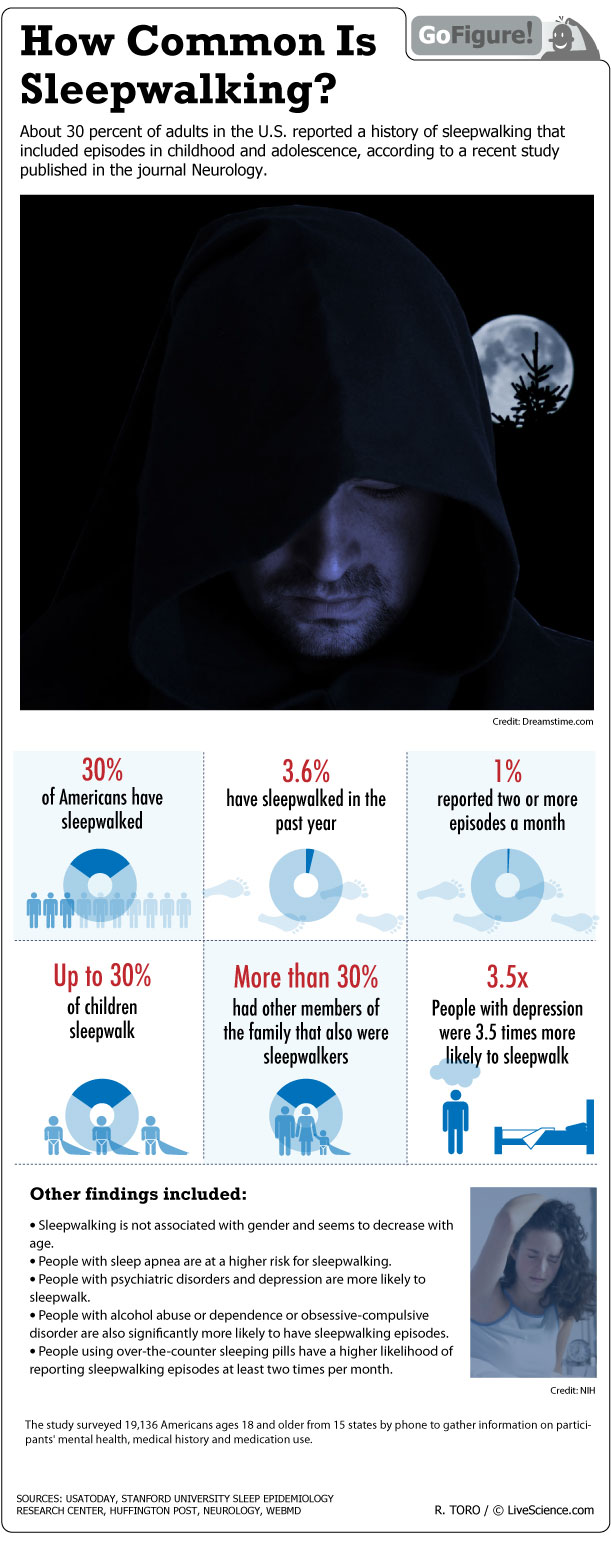Wake Up! The Real Facts on Sleepwalking (Infographic)

Sleepwalking is more common than previously estimated, according to a recent study in the journal Neurology.
The survey, conducted by the Stanford University Sleep Epidemiology Research Center, involved 19,136 Americans ages 18 and older from 15 states, finding that 29.2 percent reported a sleepwalking episode at some point in their lives. That included episodes in childhood and adolescence.
Sleepwalking is more common in childhood and seemed to decrease with age. Slightly more than a quarter of people said they'd sleepwalked as a child or teen but had not done so recently.
Scientists aren't sure what provokes some people to sleepwalk, but certain medical conditions are linked to sleepwalking. People who suffer from mental disorders such as depression and obsessive-compulsive disorder (OCD) are especially prone to sleepwalking. People with sleep disorders such as sleep apnea and insomnia are at a higher risk for sleepwalking, as well as people with alcohol abuse or dependence issues.
The study also found that sleepwalking was not associated with gender and that nearly one-third of individuals who sleepwalked had a family history of the disorder. [Read more about the sleepwalking study]
Get the world’s most fascinating discoveries delivered straight to your inbox.



